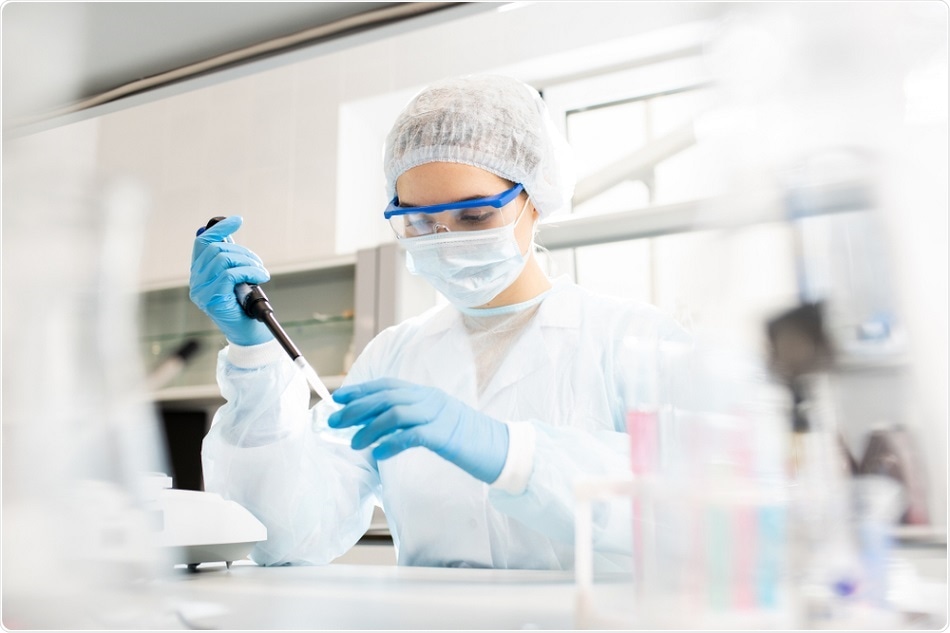
The language of metabolites can be decoded with new genome technology
A huge range of medical, agricultural, and industrial products are based on secondary metabolites, the organic compounds microbes produce to regulate internal and external messaging, self-defense, and homeostasis of an organism. A team of microbiologists and genomicists led by the Department of Energy Joint Genome Institute (JGI) has invented a genetic engineering tool that advances the study of such compounds and expand our understanding of how microbes evolve and their place in their environment.

SeventyFour | Shutterstock
Called CRAGE (chassis-independent recombinase-assisted genome engineering), the technology could help researchers circumvent a common obstacle faced when trying to study secondary metabolites. Microbes do not make secondary metabolite compounds when they are studied in laboratory conditions, as they do not present the usual levels of competition that incite the production of secondary metabolites, meaning scientists are unable to study them.
This is because secondary metabolites, while not essential for a microbe’s survival, are able to offer an organism certain advantages when faced with environmental competition or pressure. The ability to produce secondary metabolites is passed back and forth between microbes through horizontal gene transfer, whether the microbes are closely or distantly related. This is made possible because secondary metabolites are encoded by groups of genes called biosynthetic gene clusters (BGCs).
This means that microbes are able to quickly adapt to changing environmental conditions by losing or gaining traits to ensure their survival, triggering mutations in the process through the rapid sharing of secondary metabolite compounds and creating a spike in the production of diverse compounds.
But now, scientists are able to use CRAGE to transplant BCGs from one organism into a wide range of potential production hosts at the same time so that they are able to identify microbial strains capable of producing secondary metabolite compounds in artificial, laboratory conditions.
Helge Bode, from Goethe University Frankfurt, German, co-lead author of the study, said:
“CRAGE therefore allows us to access these compounds much more readily than before. In several cases, it has already enabled us to produce and characterize for the first time a compound of interest.”
CRAGE will also enable researchers to transfer microbes between different species, allowing them to observe how compounds currently classed as “biological dark matter” work, finally building on the theories and predictions made on this subject.
“The previous tools to do this are much more limited,” Hoyt continued.
But, when Yoshikuni’s research team were testing CRAGE, Hoyt and his colleagues Kerem Bingol and Nancy Washton were able to help in the characterization of an as-yet-unknown set of secondary metabolites, showcasing the benefits of CRAGE as a research tool.
Expanding on its use outside of metabolite study, co-first author of the study Jing-Ke, a scientific engineering associate at JGI, said that CRAGE could be used to “engineer microbes for the production of proteins, RNAs, and other molecules with a huge range of applications.”
So far, the research team has transferred BGCs into 30 different strains of bacteria, with the belief that it will work in a wide range of other strains too. As the CRAGE technique will need to be adapted for certain species of bacteria, research is on-going.
However, research teams who use JGI (a DOE Office of Science User Facility) are able to use CRAGE through pilot programs.
“Aside from a few very well-studied microbes, the so-called model organisms like E. coli, we don’t know whether a strain will have the skills needed to perform all the steps of BGC activation,” Yoshikuni, who developed the precursor gene recombinant tool, RAGE, in 2013 said.
He and his colleagues at JGI are using CRAGE to explore unconventional bacterial hosts for bio-manufacturing, among many other subjects in their own research.
“Hopefully with CRAGE, we can start to shift that paradigm,” Yoshikuni continued. “We can look into more wild species and find their properties that are more suitable for a production of products and medicines.”























.png)











No hay comentarios:
Publicar un comentario